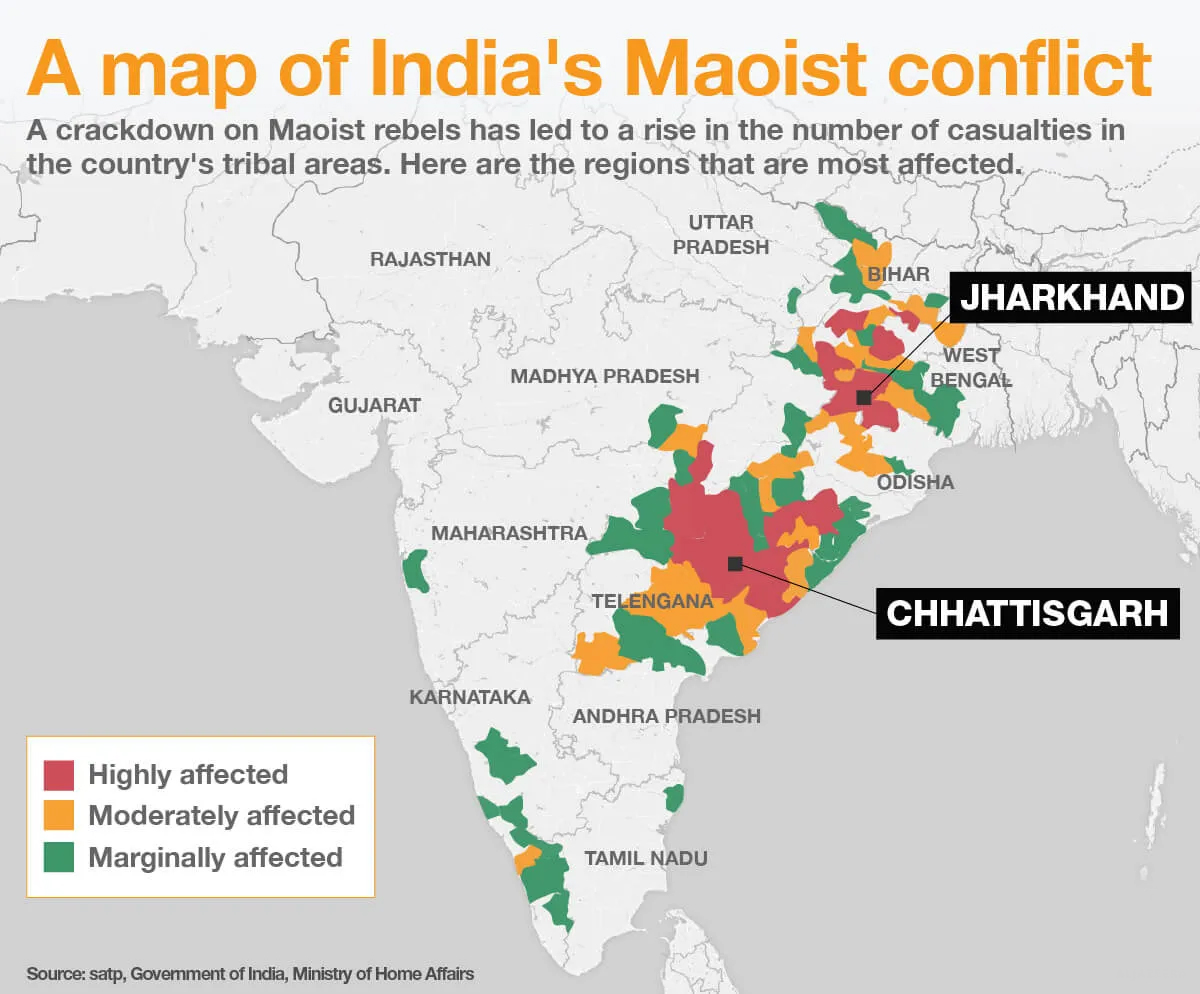Context:
Chhattisgarh recently witnessed one of the largest single-day surrenders of Maoist cadres in its history. A total of 210 Maoists, including 110 women, laid down their arms at the Reserve Police Lines in Jagdalpur, Bastar district.
Puna Margem' Ceremony:
The surrender ceremony, termed 'Puna Margem' (Path to Rehabilitation), was a symbolic gesture of the Maoists rejoining the mainstream society. Each returning cadre was presented with a copy of the Indian Constitution and a rose, signifying their commitment to peace and democratic values.
Motivations Behind the Surrender:
The decision to lay down arms was influenced by several factors:
-
- Internal Fractures: Dissatisfaction with the Maoist leadership and internal divisions within the organization.
- Security Concerns: Heavy losses suffered by the Maoist forces in recent encounters.
- Desire for Peace: A collective yearning for a dignified and harmonious life through peaceful means.
- Internal Fractures: Dissatisfaction with the Maoist leadership and internal divisions within the organization.
Implications of the Mass Surrender:
1. Strategic Shift in Counter-Insurgency Operations: The mass surrender signifies a strategic shift in Chhattisgarh's counter-insurgency operations. The state's emphasis on rehabilitation over punitive measures has led to a significant reduction in Maoist activities, particularly in the Abujhmad and North Bastar regions. This approach aligns with Union Home Minister Amit Shah's directive to eliminate Naxalism by March 2026, contingent upon the Maoists' renunciation of violence.
2. Enhanced Community Engagement and Trust: The 'Puna Margem' initiative has fostered greater community engagement and trust between the government and local populations. By integrating former insurgents into mainstream society, the government has demonstrated a commitment to peace and development, encouraging other Maoist cadres to reconsider their stance.
About Left-Wing Extremism (LWE):
Left-Wing Extremism (LWE) is a form of politically motivated violence in India rooted in Maoist ideology, aiming to overthrow the state through armed insurgency. It primarily affects underdeveloped, tribal-dominated regions, historically known as the "Red Corridor," and is characterized by violence against security forces, infrastructure, and civilians. The government has countered LWE with a multi-pronged strategy combining security operations, development initiatives, and welfare schemes.
Conclusion:
The mass surrender of 210 Maoist cadres in Jagdalpur represents a significant milestone in Chhattisgarh's efforts to combat Left-Wing Extremism. It underscores the effectiveness of sustained peace initiatives, dialogue, and rehabilitation programs in addressing complex insurgency issues.







